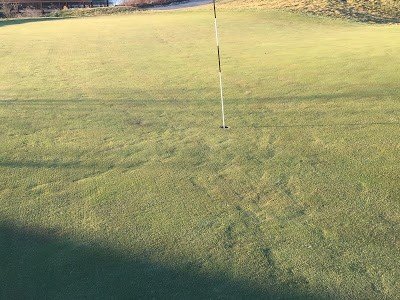Why can’t we play on the greens? It’s almost 45 degrees! - The wear and tear on squishy turf
Winter weather patterns change from year to year dependent on where the coldest air is located on the planet. Transient weather patterns in the winter months can be the worst nightmare for turfgrass managers and the best thing for the golfer who wants to pull his clubs out. On a 45-degree day in the middle of November, golfers don’t want to hear that “greens are frozen,” “temporary pins only,” or “carts on the paths.”
The region of the golf course will determine the frequency that these statements can be heard. In the northern regions, courses likely remain closed during winter months. Most Midwest courses battle with the tough decisions of whether to open greens or close their course, dependent on soil conditions. Despite what the high temperature for the day is in the middle of fall, golf course operators must make the appropriate decisions for the short-term as well as the long-term impact on course conditions in the spring and summer.
Every course must make decisions about winter play at some point. Species of the turf, location of the region, and seasonal changes all directly impact the complexity of the decisions for turf managers. Planning for Mother Nature is one of the most difficult aspects of golf course management, and soil temperature can trigger many physiological effects in turfgrass. Temperature variations change less rapidly in wet soils than in dry soils, because water has a large capacity to resist temperature changes compared to soil particles. This explains why it takes several weeks of persistent cold weather to form an ice layer on your lake, and vice versa on thawing the lake.
Previous cold temperatures and moisture in the soil will cause temperatures to rise significantly slower than the ambient temperature of the air. As the frozen green thaws, not only does it become soft, it becomes very “squishy.” The addition of traffic causes a “rutting” effect that takes additional maintenance and wear on the turfgrass that is not needed during non-growth conditions.
The other scenario is having a green that has thawed a few inches from the surface but remains frozen beneath. Bentgrass roots are fibrous and have a weak tensile strength when sheared-off or pulled.
Imagine taking carpet from a living room and only having tack nails holding it to a sheet of ice underneath. In a short time, the carpet will slide on the ice pulling the “tack nails” out as it moves. This is the concern that turf managers have when allowing golf during winter months. The opportunity for immediate turf injury is high in this scenario, but (like most issues with turfgrass) the damage may not be expressed until the spring or during stressful times in summer months. Appropriate aerification and topdressing in the late fall can assist with reducing the moisture held in the top surfaces of the soil, but is not a cure for extremely wet and cold conditions.
Living in the transition zone can give golfers a few bonus days in the winter months for golf. We do understand that golfers simply want to enjoy the course on a bonus day in the middle of winter, must turf managers must consider membership’s needs and expectations for the entire year. Smoothness of greens is the most common discussion among golfers during the season, and maintaining that expectation is a 365-day process.
If you have questions about turf conditions at any Dormie Network club, contact a superintendent:
ArborLinks
Michael Sheely, Superintendent
msheely@arborlinks.com
Ballyhack
Steven Ball, Superintendent
sball@ballyhackgolfclub.com
Briggs Ranch
Nick Graves, Superintendent
ngraves@briggsgolf.com
Dormie Club
Billy Lewis, Superintendent
blewis@dormieclub.com
Hidden Creek
Jay Ewan, Director of Agronomy
jay-ewan@hiddencreekclub.com
Victoria National
Kyle Callahan, Director of Agronomy
kyle-callahan@victorianational.com











